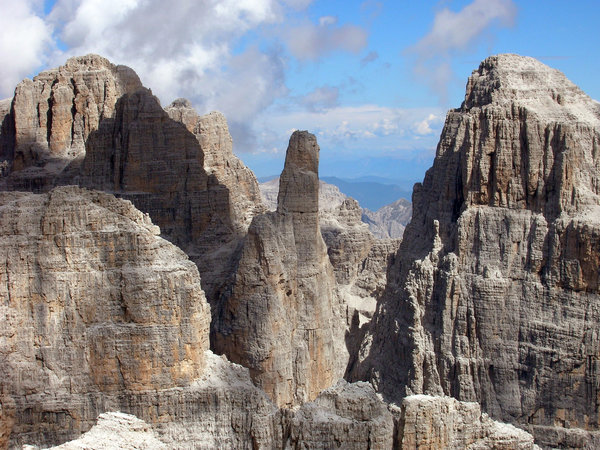In Seville, on 26 June 2009, the Dolomites were officially recognised as a world heritage site and added to the list of UNESCO natural heritage sites, thanks to their unique scenery and the scientific importance they hold on a geological and geomorphological level.
The Dolomites are made up of nine mountain ranges, separated by valleys, rivers and other groups of mountains, and reach in to the provinces of Trento, Bolzano, Belluno, Pordenone and Udine, covering some 412,000 hectares of Alpine territory.
What does being a world heritage site mean?
On a strategic level, it means following 4 directions: preserving a world heritage so that future generations can inherit it intact, enhancing visitor experiences, with a sustainable and respectful approach to tourism, raising local awareness of the site from a viewpoint of community values and coordinating management of the site according to clear, shared governance.
The Brenta Dolomites are one of the 9 Dolomitic mountain systems recognised by UNESCO as a world heritage site. To the far west of the Dolomites they border on Val di Sole, Val di Non, the high plain of Paganella and Val Rendena.
The entire Brenta Dolomites mountain group sits inside the Adamello Brenta Nature Park and is characterised by calcareous and dolomitic rock in harsh forms, all sharp points and ridges, a spectacular sight that is a joy for the eye and heart.
